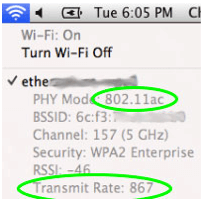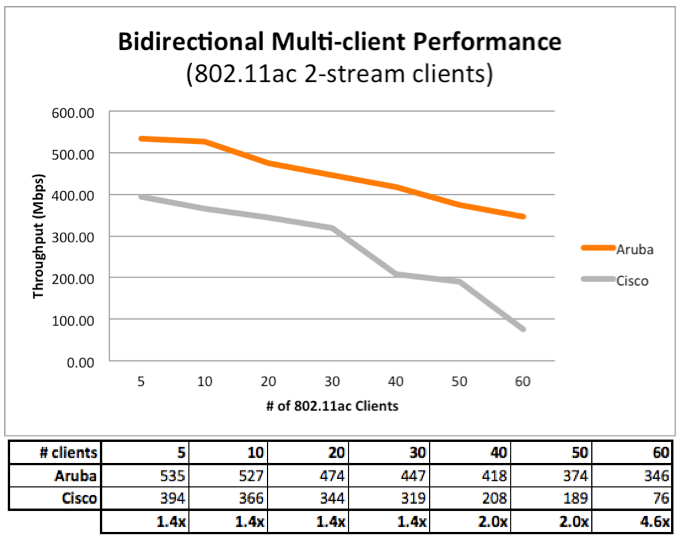With the release of Apple's Mac OSX Mavericks (10.9) this month it became clear how important multi-client performance really is over enterprise Wi-Fi. Walking around our office, I was amazed at how many people just had to download the Mavericks update at over 5GB each as soon as it came out. Thank goodness we were connecting at high data rates and our Aruba AP-225 was handling this load without slowing to a crawl with the number of clients connected.

I was actually surprised how well the network performed, having had poor performance experiences on the non-Aruba Wi-Fi Access Points that were deployed at my prior company.
While single client numbers for 802.11ac provide the "wow factor" it's really multi-client performance that we rely on, on a day-to-day basis. Multi-client is what really taxes the system and showcases not only an APs raw processing power, but also its intelligence for allocating capacity fairly and making the best use of limited capacity.
As you can see here,
Aruba AP outperforms Cisco by 1.4x with 5 clients
And with a more typical office scenario with more clients,
Aruba AP outperforms Cisco by 4.6x with 60 clients

Our technical marketing engineers recently setup a real-world test scenario to look at how our 802.11ac AP-225 performs under load with a large number of clients. As you can see from this graph, we are able to handle the enterprise performance needs even with a typical office environment that has a large number of clients per access point, unlike the Cisco 802.11ac AP that struggles as the number of clients increases. This test made use of up to 60 laptops that support 802.11ac with 2 spatial streams and an 80MHz channel width. We utilized IxChariot® v7.10 SP5 to generate the bidirectional TCP traffic in order to simulate real-world applications running on the laptops. The Access Points were ceiling mounted with the clients and AP's in the same location and utilizing the same channel to eliminate variables in the tests.
It is common to see a decline in Wi-Fi throughput as more devices connect to the network due to the increased contention between devices. The Aruba Wi-Fi solution minimizes the deline in throughput with RF innovations like Adaptive Radio Management (ARM) technology. Aruba's ARM minimizes client contention and ensures airtime fairness so that your users will get the best possible performance out of the Wi-Fi network, even as the number of devices grows. The recently introduced patented ClientMatch technology eliminates sticky clients so that the network is able to move clients transparently onto the best AP to maximize signal quality and thus maximize speeds. Additionally, our AppRF provides flow-level QoS and traffic shaping so that IT administrators can manage their wireless bandwidth most effectively.
Click here to learn more about how our products enable high-performance Wi-Fi even in real-world scenarios with a high client density.




